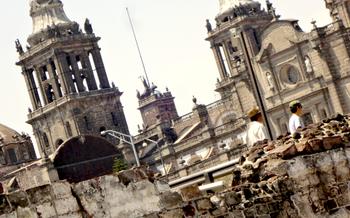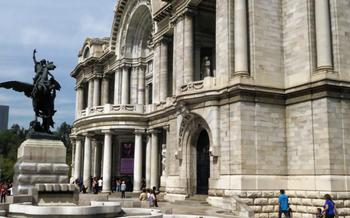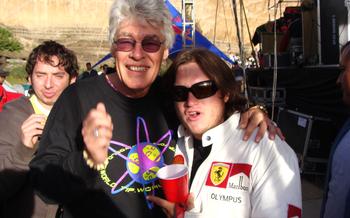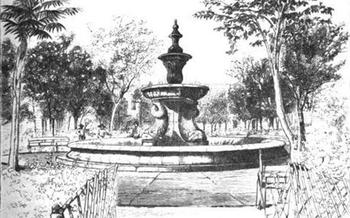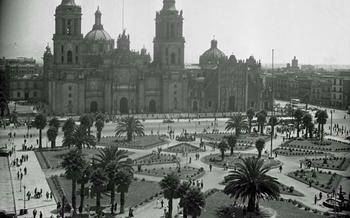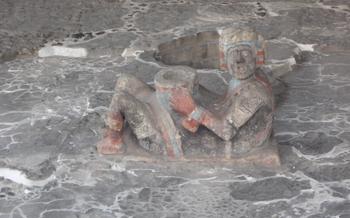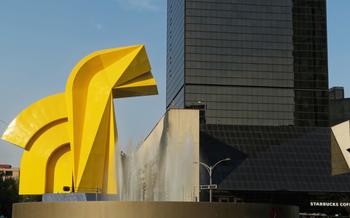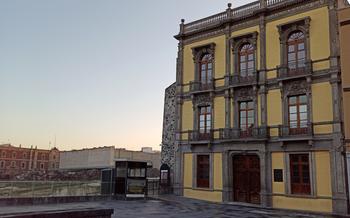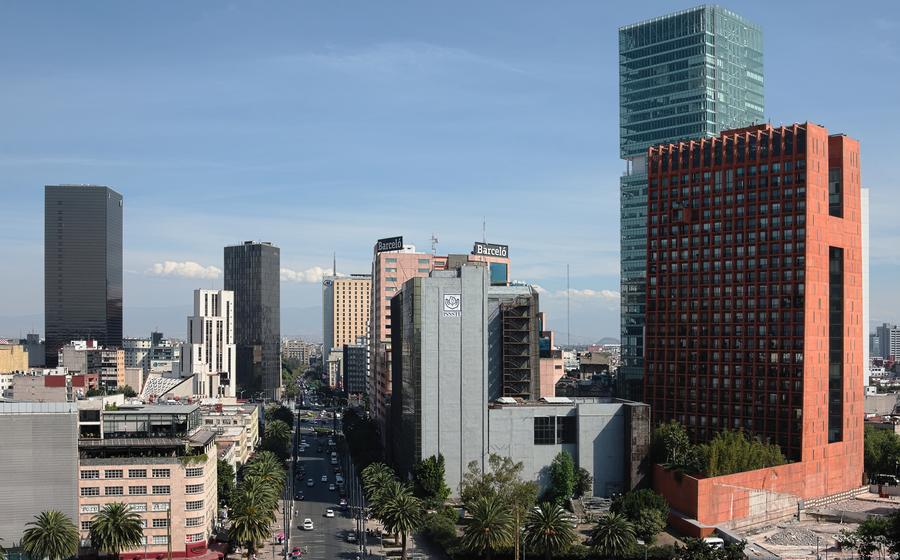
Museo de la Tortura
- The Museum's Mission: Education and Awareness
- A Profound and Disturbing Experience
- Navigating the Museum: A Self-Guided Tour
- Unique Artifacts and Stories
- Controversies and Ethical Considerations
- Suggested Duration for a Visit
- Nearby Attractions and Points of Interest
- Tips for Sensitive Visitors
- Insider Tip: Unveiling the Hidden Stories
The Museum's Mission: Education and Awareness
The Museo de la Tortura is not merely a repository of macabre artifacts; it serves a profound mission of education and awareness. Through its immersive exhibits and educational programs, the museum aims to:
-
Promote Historical Understanding: By shedding light on the dark chapters of Mexico's past, the museum encourages visitors to confront and understand the historical significance of torture as a tool of oppression and control.
-
Combat Torture and Human Rights Abuses: The museum actively works to raise awareness about the ongoing issue of torture and human rights violations worldwide. It collaborates with organizations and advocates dedicated to eradicating torture and promoting human rights.
-
Encourage Dialogue and Reflection: The museum encourages visitors to engage in critical dialogue and self-reflection about the role of torture in society, its impact on individuals and communities, and the importance of respecting and upholding human rights.
-
Preserve Cultural Heritage: The museum recognizes torture as a part of Mexico's cultural and historical heritage, albeit a dark and disturbing one. By preserving artifacts and stories related to torture, the museum contributes to the preservation of this complex and multifaceted heritage.
A Profound and Disturbing Experience
The Museo de la Tortura confronts visitors with the harsh reality of torture, evoking a range of emotions from shock and revulsion to sadness and anger. The graphic depiction of torture methods and instruments can be deeply disturbing, forcing visitors to confront the depths of human cruelty and suffering. Trigger warnings are provided at the entrance, and visitors are advised to consider their emotional well-being before entering. It is important to approach the museum with sensitivity and respect, acknowledging the gravity of the subject matter and the potential impact on one's emotions.
Navigating the Museum: A Self-Guided Tour
The Museo de la Tortura is designed to offer visitors a comprehensive and immersive experience. The exhibits are well-curated and informative, featuring detailed descriptions and explanations in Spanish and English. Multilingual captions and translations ensure that international visitors can understand the content and appreciate the historical significance of the artifacts. Interactive displays and multimedia elements, such as videos and audio recordings, provide additional insights into the history of torture and its impact on individuals and society. The museum also offers guided tours in both Spanish and English, led by knowledgeable and experienced guides who can provide further context and answer any questions visitors may have.
Unique Artifacts and Stories
The Museo de la Tortura houses a remarkable collection of historical documents, manuscripts, and personal accounts that offer a glimpse into the lives of individuals who have suffered through torture. These include written testimonies, letters, diaries, and memoirs that provide firsthand accounts of the horrors endured by victims.
The museum also displays artifacts confiscated from prisons and police stations, such as medieval instruments of torture, modern interrogation equipment, and restraints. These tangible relics offer a chilling reminder of the brutality and ingenuity employed by torturers throughout history.
For a more profound understanding of the human toll of torture, visitors can explore artistic interpretations and representations of the subject. These include paintings, sculptures, and installations that convey the emotional and physical suffering experienced by victims, offering a powerful and evocative way to confront the reality of torture.
Controversies and Ethical Considerations
The Museo de la Tortura has faced some controversies and ethical considerations due to the graphic nature of its exhibits. Some critics argue that the explicit depictions of torture can be traumatizing and may desensitize visitors to the horrors of human rights abuses. Concerns have also been raised about the potential for the museum to become a form of entertainment or spectacle, rather than a space for education and reflection.
The museum's curators have defended their approach, arguing that the graphic exhibits are necessary to convey the full extent of the suffering inflicted on victims of torture. They emphasize that the museum is not intended to be a form of entertainment, but rather a place where visitors can learn about the history of torture and its ongoing relevance in contemporary society.
The debate over the Museo de la Tortura highlights the complex ethical considerations involved in presenting difficult and disturbing content in a museum setting. The museum's curators have attempted to strike a balance between education and exploitation, while also respecting the victims of torture and their families.
Suggested Duration for a Visit
While you can rush through the Museo de la Tortura in under an hour, it is highly recommended that you dedicate at least 1-2 hours to fully explore the exhibits and appreciate the depth of the museum's content. The museum's layout allows for a self-paced tour, giving you the flexibility to linger at exhibits that particularly resonate with you or take breaks as needed.
Plan to arrive with ample time to read the informative captions, view the multimedia presentations, and engage with the interactive displays. It's important to remember that the exhibits deal with sensitive and disturbing topics, so taking breaks to process your emotions or reflect on the information is perfectly acceptable.
By allowing yourself sufficient time, you'll gain a deeper understanding of the history of torture in Mexico and its ongoing impact on society. The museum's mission of education and awareness is best served when visitors have the opportunity to absorb the information at their own pace and reflect on its significance.
Nearby Attractions and Points of Interest
The Museo de la Tortura is conveniently located in the historic center of Mexico City, surrounded by numerous other attractions and points of interest. Visitors can easily combine their visit to the museum with a broader exploration of the city's rich cultural and historical heritage.
Within walking distance of the museum, you'll find the Templo Mayor, the ruins of the ancient Aztec city of Tenochtitlan, and the Palacio Nacional, the seat of the Mexican government. Other nearby attractions include the Metropolitan Cathedral, the Zócalo, and the Palacio de Bellas Artes, one of Mexico's most renowned cultural venues.
For those interested in delving deeper into the country's history, the Museo Nacional de Antropología and the Museo Frida Kahlo are must-visit destinations. Art enthusiasts can explore the numerous galleries and museums in the area, such as the Museo de Arte Moderno and the Museo Soumaya.
Mexico City is also a culinary paradise, offering a diverse range of restaurants, cafes, and markets. From traditional Mexican cuisine to international flavors, there's something to satisfy every palate. Visitors can also enjoy shopping for souvenirs and handicrafts in the many markets and boutiques in the area.
By combining a visit to the Museo de la Tortura with other nearby attractions, you can create a comprehensive cultural experience that offers a multifaceted perspective on Mexico's rich history, art, and gastronomy.
Tips for Sensitive Visitors
While the Museo de la Tortura offers a valuable educational experience, it's important to be mindful of the intense nature of the exhibits. Visitors who may be sensitive to graphic content or have experienced trauma should take precautions to ensure a positive and respectful experience.
Before your visit, prepare yourself emotionally by researching the museum and reading reviews from other visitors. Consider visiting with a companion or guide who can offer support and provide context for the exhibits.
During your visit, take breaks as needed to process your emotions and reflect on what you're seeing. If you feel overwhelmed, seek support from the museum staff or step outside for some fresh air.
Be respectful of other visitors and their reactions. Everyone experiences museums differently, so be mindful of those who may be more sensitive to the content.
Consider joining a guided tour to gain insights and historical context from a knowledgeable expert. Guided tours can help you navigate the museum's exhibits and provide a safe space for discussion and reflection.
Insider Tip: Unveiling the Hidden Stories
The Museo de la Tortura is not just a collection of artifacts and exhibits; it is a treasure trove of hidden stories and untold narratives. To truly immerse yourself in the museum's depth, engage with the knowledgeable staff or guides. They can provide additional insights, historical context, and personal anecdotes that bring the exhibits to life. Ask questions, express your curiosity, and delve deeper into the stories behind the objects. Participate in special events, workshops, or lectures organized by the museum to gain a broader perspective on the history of torture and its impact on Mexican society. Additionally, explore the museum's online resources, exhibitions, and digital archives to uncover even more hidden stories and perspectives. These resources offer a rich tapestry of information that complements the physical exhibits, enriching your understanding of this complex and often overlooked aspect of Mexican history.
